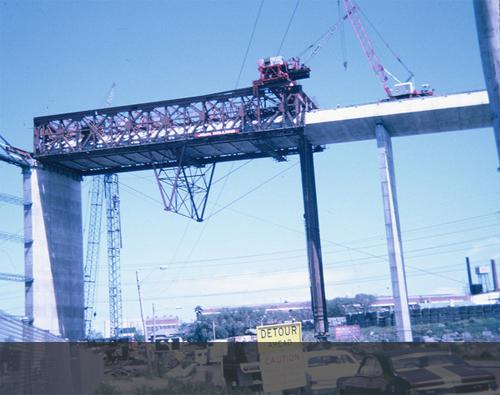On Wednesday 14 October, D Ward, M.I.C.E., Section Engineer, Freeman Fox and Partners, West Side, gave formal written instructions for work to be done (to straighten the buckle on span 10-11 ‘without further delay’). The instructions refer first to the necessity to complete the bolting of the No. 4 diaphragm; unbolting the 4-5 splice is to be done with the object of making possible the completion of the diaphragm connection.
Work started at about 8.30 am on 15 October. After about sixteen bolts had been loosened, there was significant slipping of the two plates jamming the bolts in their holes. At this stage, Senior Inspector Enness of Steel Work for Freeman Fox and Partners, suggested the bolts be tightened with an air gun until they broke. The shock reaction of the bolts failing in tension dislodged the broken pieces clearing the holes.
Eventually about 30 bolts were removed from the box 5 side of the splice, extending from the longitudinal centre line to within about 2 feet of the inner web. Also about seven bolts had been removed from box 4 side of the splice, all close to the longitudinal centre line. The bulge had flattened from about 3.5 inches initially to about 1 1/8 inches, but adjacent to the longitudinal centre line the sliding movement was said to have been so great that some holes were completely blind.
At this stage, a dramatic change took place. The signs of distress for which Ward had been on guard suddenly appeared. First, the vicious buckle which had been limited to the inner upper panel spread into the adjacent two outer upper panels. This was accompanied by the buckling of the upper part of the winner web plate.
About this time, Ward and other witnesses say that they felt a gentle settlement of the north half span of the bridge.

